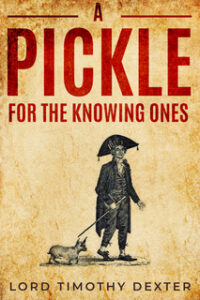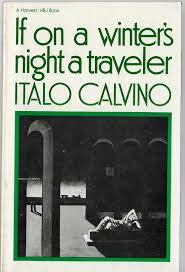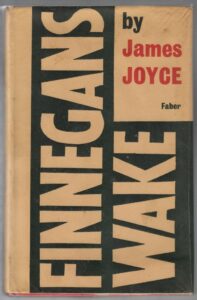World Book Day: Brain-scratchers for bookworms

Some authors have deliberately used incorrect spellings & grammatical errors as well as many unusual writing techniques over the years
While readers may say that there is no greater joy than finishing a book from cover to cover, not all books are that simple get through from cover to cover. With deliberate spelling and grammatical errors and many unusual writing techniques, some books have been nothing short of a mystery for language experts and researchers.
Here is a list of some of the most unusual novels of all times that might confuse even the most avid readers.
Alphabetical Africa, Walter Abish
Published in 1947, Walter Abish’s first novel, Alphabetical Africa, written in English, is a comedy set in an imaginary dark continent that expands and contracts with ineluctable precision, as one by one the author adds the letters of the alphabet to his book and then subtracts them. While the African landscape forms and crumbles, it is, among other things, attacked by an army of driver ants, invaded by Zanzibar, painted orange by the transvestite Queen Quat of Tanzania, and becomes a hunting ground for a pair of murderous jewel thieves.
However, these incidents are not the strangest things about this book. The first chapter of Alphabetical Africa contains only words that begin with the letter ‘A’. The second chapter allows words that begin with ‘B’ as well, the third ‘C’ words, and so on to chapter twenty-six.
Dancing Lessons for the Advanced in Age, Bohumil Hrabal
The 1964 novel, Dancing Lessons for the Advanced in Age is a 128-pages long Czech novel written by Bohumil Hrabal. It is about an old man who talks about things that have happened to him. It sounds like an average setting for any normal literary work, except for one thing: The entire book is only one sentence long!
Speaking to a group of sunbathing women who remind him of his past, this elderly roué tells the story of his life. Readers learn of amatory conquests, scandals both private and public, of military adventures and domestic feuds, of what things were like in the days of the monarchy, and how they have changed since.
A Pickle for the Knowing Ones, Timothy Dexter
Originally published in 1082 and written as an autobiography by Timothy Dexter, the entire novel is written without punctuation in a series of short paragraphs. One can also find numerous spelling and grammatical mistakes throughout the novel.
For instance, the first few sentences of the book are “To mankind at Large the time is Com at Last the grat day of Regoising what is that why I will tell you thous three kings is Rased Rased you meane should know Rased on the first Royal Arch in the world olmost Not quite but very hiw up upon so thay are good mark”
In the second edition, Dexter responded to complaints about lack of punctuation by adding an extra page of punctuation marks with instruction that printers & readers could insert them wherever needed.
Hopscotch, Julio Cortazar
Hopscotch by Julio Cortazar was published in Spanish in 1963 and in English in 1966. This book is divided into 155 chapters with a complex set of instructions detailing two approaches to read it.
The first is to read chapters 1-56 straight through, and then ignore the other 99 chapters as ‘expendable.’ The second is to ‘hopscotch’ through the book by jumping from chapter to chapter random ways. This novel was often referred to as a ‘counter novel by Cortazar himself. He explained it meant an exploration with multiple endings and unanswered queries, very ‘unlike a novel’.
If on a Winter’s Night a Traveler, Italo Calvino
The 1979 Italian novel, Se una notte d’inverno un viaggiatore, translated to English as If on a Winter’s Night a Traveler, is in one sense a comedy in which the two protagonists, the Reader and the Other Reader, ultimately end up married, having almost finished If on a Winter’s Night a Traveler. In another, it is a tragedy, a reflection on the difficulties of writing and the solitary nature of reading.
The novel narrates the story of the Reader, who is trying to read a book called ‘If on a Winter’s Night a Traveler’ by Italo Calvino. He finds his goal continuously frustrated by printing errors and being given the wrong book, which actually happens to the reader while reading this novel.
Each chapter is divided into two sections. The first section of each chapter is in second person and describes the process a reader goes through in attempt to read the next chapter of the book he or she is reading.
S, J.J. Abrams and Doug Dorst
This book, titled ‘S‘ is like a book inside a book. Published in 2013 by J. J. Abrams and Doug Dorst, the book is presented as a copy of the famous book, The Ship of Theseus.
The book appears to be a library copy that has not been returned. The entire book is about the dialogue between two students who are trying to uncover the author’s identity. The book, readers say, is all about two people’s lives as they find the stolen book, the one reader is reading right now.
Finnegans Wake, James Joyce
Finnegans Wake is an experimental English novel by James Joyce. Extracts of the work appeared as Work in Progress from 1928 to 1937, and it was published in its entirety as Finnegans Wake in 1939.
In this novel, each word & each sentence can be read a dozen ways on account of misspellings & invented portmanteaus. Some words have over 100 letters. For instance, “What then agentlike brought about that tragoady thundersday this municipal sin business? Our cubehouse still rocks as earwitness to the thunder of his arafatas…”
Codex Seraphinianus, Luigi Serafini
First published in 1981 in Italy, Codex Seraphinianus is considered one the strangest encyclopedias in the world. Some language experts have said that the book’s title means ‘code of Seranifi’.
Written by Luigi Serafini, in a language that no one has been able to decipher till now, the book is filled with illustrations of surreal, impossible things. The entire book is handwritten and illustrations are hand-drawn and coloured by Serafini himself.
The Familiar, Mark Z Danielewski
Published in 2015, The Familiar is only one of the 27 volumes series of stories that Mark Z Danielewski had planned to write.
The novel incorporates different fonts for each character’s point of view. Not only fonts but the author also uses different layout techniques throughout the novel to portray different things. It is probably the only book where the layout techniques have been used as a stylistic device.













